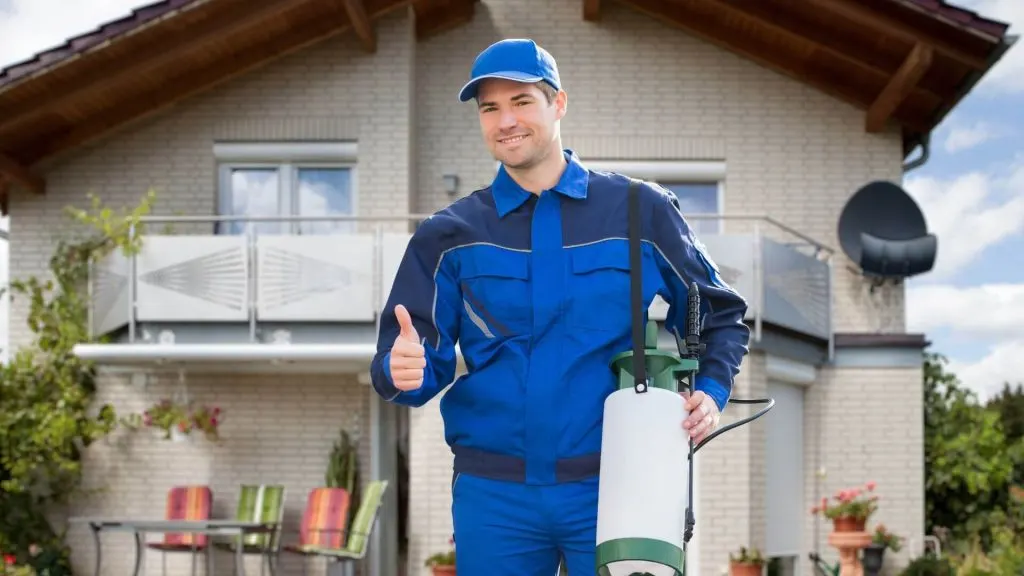Dealing with a pest infestation can be more than just an annoyance; it can pose serious health risks and cause significant damage to your property. Whether you’re battling relentless ants in the kitchen, menacing rats in the attic, or troublesome termites undermining the structural integrity of your home, taking swift and effective action is essential. This guide aims to arm you with professional pest eradication tips that go beyond the basic advice. From understanding the behavior of different pests to applying the most efficient treatment methods, we’ve got you covered. Say goodbye to unwanted guests and enjoy a safer, cleaner living environment.

DIY vs. Professional Help
While there are many effective DIY solutions for pest control, some infestations require professional help. This is particularly true for larger infestations or pests that pose a significant health risk, like rats or termites. Professionals have access to more potent treatments and the expertise to apply them without risking the health of your household.
Deciding when to call in a professional depends on the severity of the infestation and the success of DIY efforts. If you’ve tried several methods without success or if the infestation worsens, it’s time to seek professional assistance. Remember, the longer you wait, the more difficult and expensive it can become to eradicate the pests. The people behind ORKIN note that while DIY methods may seem cost-effective at first, they can end up being more costly if the infestation persists. It’s better to address the issue promptly and effectively with professional help.
Identify the Pest
Before implementing any pest control efforts, it’s crucial to identify the pest accurately. Different pests require different eradication and prevention strategies. For instance, the approach for dealing with mice won’t be effective against termites. Start by observing any visible signs of infestation, such as droppings, nests, or damage to property. Consult a professional if you’re unsure, as correct identification is the first step toward effective pest control.
Once you’ve identified the pest, research their habits and needs. Most pests invade your space looking for food, water, or shelter. Understanding what attracts them can help you eliminate these sources and make your home less appealing. For ants, it might mean keeping your kitchen meticulously clean. For rodents, it could involve sealing up entry points and removing clutter.
Professional Pest Control Products
There are various products available that professionals use and recommend for effective pest control. These include gel baits, insecticidal dusts, and traps. Gel baits work well for pests like ants and cockroaches, offering a targeted approach. Insecticidal dusts are excellent for hard-to-reach areas and can be effective against a variety of pests, including bed bugs and termites.
However, it’s important to use these products responsibly. Always follow the manufacturer’s instructions and consider the safety of pets and children. In certain cases, it may be necessary to vacate the home for a period to apply these treatments safely. If you’re unsure about using these products, consulting a professional pest control service is advisable to ensure effective and safe application.
Preventive Measures
Prevention is key to long-term pest control. Simple measures such as sealing cracks and crevices in walls and foundations can deter pests from entering. Installing screens on windows and doors also helps keep flying insects out. Regular maintenance checks on plumbing and fixtures can prevent leaks, reducing the moisture that attracts pests like cockroaches and silverfish.
Regular house cleaning is essential. Pests are less likely to stay if there’s no food available. Secure all food in sealed containers, vacuum regularly, and dispose of garbage promptly. These habits, combined with regular inspections, can significantly reduce the likelihood of pest invasions.
Follow-Up and Maintenance
Finally, after addressing a pest infestation, follow-up and maintenance are critical to prevent recurrence. Schedule regular inspections of your property, focusing on previously affected areas and potential entry points. Keep up with preventive measures such as sealing up gaps and maintaining cleanliness.
Consider implementing natural deterrents such as certain plants that repel pests or essential oils. These can be part of an integrated pest management approach that minimizes the use of chemicals. Staying vigilant and maintaining these practices will ensure your home remains pest-free in the long run.

Effective pest control requires a combination of understanding the behavior of different pests, using appropriate treatment methods, and implementing preventive measures. While DIY efforts may work for minor infestations, seeking professional help is recommended for severe or persistent cases. Remember to identify the pests accurately, use products responsibly, and regularly maintain your home to ensure long-term success in keeping pests at bay. With these tips, you can say goodbye to pests and enjoy a pest-free living environment. It’s time to take back control of your home and bid farewell to unwanted guests for good.

Jessi is the creative mind behind The Coffee Mom, a popular blog that combines parenting advice, travel tips, and a love for all things Disney. As a trusted Disney influencer and passionate storyteller, Jessi’s authentic insights and relatable content resonate with readers worldwide.
